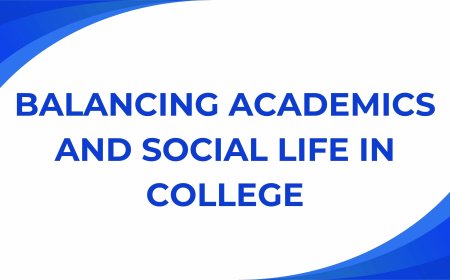John Enos Warns of Judicial Activism Eroding Second Amendment Freedoms
John Enos warns how judicial activism threatens to erode core Second Amendment freedoms, challenging the constitutional right to keep and bear arms.

Judicial Overreach and the Second Amendment
In The Right to Keep and Bear Arms, author and legal scholar John W. Enos delivers a piercing critique of how judicial activism threatens to erode one of America's most enduring constitutional liberties. Enos argues that the judiciary, particularly in recent decades, has moved beyond its constitutional role of interpreting laws to actively reshaping the foundational meaning of the Second Amendment. This trend, he warns, jeopardizes not only gun rights but also the constitutional balance of power intended by the Founding Fathers.
The book provides both a historical and philosophical foundation for understanding the right to bear arms. Enos outlines how this right, rooted deeply in English common law and further solidified by the American Revolution, was not granted by government but recognized as preexisting and inalienable. The Founders saw the right to arms as essential to individual liberty, national defense, and resistance to tyranny. These themes run throughout Enoss work and serve as a stark contrast to modern judicial decisions that, in his view, selectively reinterpret the Second Amendment to suit political ideologies.
Complexity and Consequences of Judicial Activism
Judicial activism, as described by Enos, occurs when courts go beyond interpreting the Constitution to essentially legislating from the bench. Instead of deferring to the clear original intent of the Second Amendment, activist judges, according to Enos, infuse their personal or political beliefs into legal decisions. This shift has led to rulings that dilute the amendments protections by imposing limitations that were never envisioned by the Founders. Enos illustrates this trend with a range of modern legal cases in which courts have upheld restrictive gun control measures on dubious constitutional grounds.
One of the strongest points Enos makes in The Right to Keep and Bear Arms is that judicial activism often disguises itself in legal complexity. Judges use nuanced interpretations and vague terminology to rationalize their decisions, which allows them to uphold legislation that would otherwise be considered unconstitutional. For instance, by redefining what constitutes "reasonable regulation," courts have increasingly approved laws that effectively disarm law-abiding citizens under the guise of public safety. Enos contends that while public safety is important, it should not be used to justify eroding a core constitutional right.
Ideological Shifts Within the Judiciary
A significant portion of the book delves into the ideological shift within the judiciary itself. Enos traces how judges appointed in recent decades, especially in urban circuits, have grown increasingly skeptical of individual gun ownership. These judges often rely on contemporary political arguments and statistical trends, rather than historical context or constitutional originalism. Enos believes this has led to a dangerous detachment from the foundational principles that the Second Amendment was built upon.
The danger of this shift is not just theoretical. Enos presents compelling examples of how judicial activism has already impacted everyday Americans. In some jurisdictions, courts have upheld restrictions on magazine capacities, mandatory waiting periods, and even bans on entire classes of firearms. In these cases, judges ruled based on modern policy preferences rather than constitutional mandates. For Enos, these decisions signal a broader trend that undermines not only gun rights but the credibility and neutrality of the judiciary itself.
Balanced View of Regulation and Liberty
What sets Enos apart from other Second Amendment commentators is his nuanced approach to constitutional interpretation. He doesn't merely offer a blanket defense of all gun ownership but carefully distinguishes between reasonable regulation and unconstitutional overreach. Enos is not against every form of gun control, but he insists that any restriction must be scrutinized through the original meaning of the Constitution. Without this anchor, he argues, the judiciary becomes a vehicle for political manipulation rather than a guardian of liberty.
Cultural Reinforcement of Activist Decisions
Enos also aims the media and academic circles that often applaud activist decisions as progressive or necessary. He argues that this cultural endorsement of judicial activism feeds into a self-reinforcing cycle. Judges are emboldened to make more ideologically driven rulings, lawmakers pass more restrictive laws knowing theyll likely be upheld, and the public becomes more detached from the constitutional roots of their rights. Enos urges readers to recognize the long-term consequences of this trend, which could eventually lead to the normalization of rights being interpreted away rather than protected.
Right to Keep and Bear Arms Book Summary
In The Right to Keep and Bear Arms Book Summary, Enos outlines how crucial it is for Americans to understand both the legal and cultural implications of judicial activism. He argues that ignorance among the general public about the historical and constitutional foundations of gun rights enables courts to reinterpret those rights without widespread backlash. Education, therefore, becomes a tool not just for advocacy but for preservation. Without informed citizens, constitutional liberties can be eroded gradually and quietly, through rulings that appear legally sound but are fundamentally unmoored from the Constitution.
Enlightenment Foundations and Moral Philosophy
The book also dedicates chapters to the philosophical underpinnings of individual liberty, citing thinkers such as John Locke and Montesquieu. Enos connects these Enlightenment principles to the American constitutional framework, showing how the right to self-defense is not merely a pragmatic concern but a moral imperative. According to Enos, the Founders understood that without the means to resist oppression, rights become hollow guarantees. Judicial activism threatens this equilibrium by concentrating too much interpretive power in unelected hands.
Call to Constitutional Action
Enos concludes his book with a call to action. He encourages citizens, lawmakers, and scholars to push back against judicial overreach by reaffirming the original meaning of the Second Amendment. He advocates for legislative efforts that reinforce constitutional interpretation grounded in historical context. More importantly, he believes that a national conversation is neededone that transcends political affiliations and focuses instead on preserving the integrity of constitutional governance.
Preserving Liberty Through Vigilance
His analysis serves as both a warning and a blueprint. While the erosion of rights may be slow and incremental, it is nonetheless real. Enoss detailed legal scholarship and accessible prose make his argument resonate with both seasoned legal professionals and everyday Americans concerned about liberty. By grounding his critique in history, law, and moral philosophy, Enos presents a compelling case against judicial activisms encroachment on Second Amendment freedoms.
Ultimately, The Right to Keep and Bear provides more than just an overview of Enoss argument it highlights a broader constitutional crisis. When judges abandon their role as impartial arbiters and become agents of political change, the balance of American governance isdisrupted. Through clear evidence and principled reasoning, John W. Enos warns us of the risks and offers a path forward that prioritizes the rule of law, individual liberty, and constitutional fidelity.



































